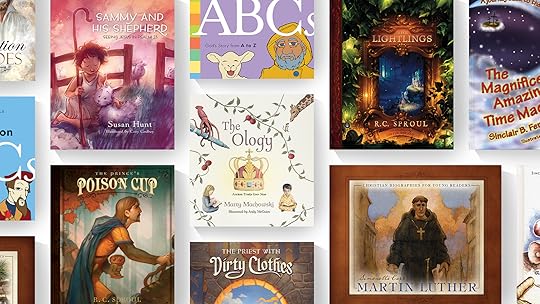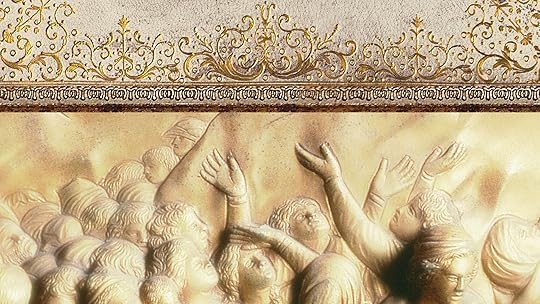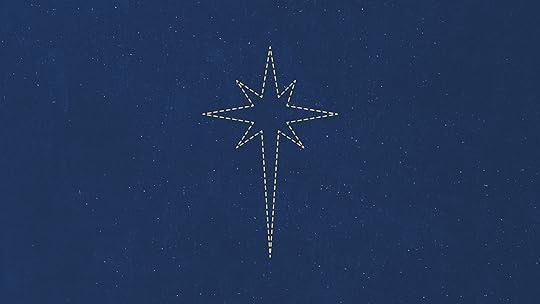R.C. Sproul's Blog, page 41
December 16, 2020
The Foundation for the Joy of Christmas

Along with the great theologian and philosopher Anselm of Canterbury we ask the question, Cur deus homo? Why the God-man? When we look at the biblical answer to that question, we see that the purpose behind the incarnation of Christ is to fulfill His work as God’s appointed Mediator. It is said in 1 Timothy 2:5: “For there is one God and one Mediator between God and men, the Man Christ Jesus, who gave Himself ….” Now, the Bible speaks of many mediators with a small or lower case “m.” A mediator is an agent who stands between two parties who are estranged and in need of reconciliation. But when Paul writes to Timothy of a solitary Mediator, a single Mediator, with a capital “M,” he’s referring to that Mediator who is the supreme Intercessor between God and fallen humanity. This Mediator, Jesus Christ, is indeed the God-man.
In the early centuries of the church, with the office of mediator and the ministry of reconciliation in view, the church had to deal with heretical movements that would disturb the balance of this mediating character of Christ. Our one Mediator, who stands as an agent to reconcile God and man, is the One who participates both in deity and in humanity. In the gospel of John, we read that it was the eternal Logos, the Word, who became flesh and dwelt among us. It was the second person of the Trinity who took upon Himself a human nature to work out our redemption. In the fifth century at the Council of Chalcedon in 451, the church had to fight against a sinister teaching called the Monophysite heresy. The term monophysite is derived from the prefix mono, which means “one,” and from the root phusis, which means “nature” or “essence.” The heretic Eutyches taught that Christ, in the incarnation, had a single nature, which he called a “theanthropic nature.” This theanthropic nature (which combines the word theos, meaning “God,” and anthropos, meaning “man”) gives us a Savior who is a hybrid, but under close scrutiny would be seen to be one who was neither God nor man. The Monophysite heresy obscured the distinction between God and man, giving us either a deified human or a humanized deity. It was against the backdrop of this heresy that the Chalcedonian Creed insisted Christ possesses two distinct natures, divine and human. He is vere homo (truly human) and vere Deus (truly divine, or truly God). These two natures are united in the mystery of the incarnation, but it is important according to Christian orthodoxy that we understand the divine nature of Christ is fully God and the human nature is fully human. So this one person who had two natures, divine and human, was perfectly suited to be our Mediator between God and men. An earlier church council, the Council of Nicea in 325, had declared that Christ came “for us men, and for our salvation.” That is, His mission was to reconcile the estrangement that existed between God and humanity.
It is important to note that for Christ to be our perfect Mediator, the incarnation was not a union between God and an angel, or between God and a brutish creature such as an elephant or a chimpanzee. The reconciliation that was needed was between God and human beings. In His role as Mediator and the God-man, Jesus assumed the office of the second Adam, or what the Bible calls the last Adam. He entered into a corporate solidarity with our humanity, being a representative like unto Adam in his representation. Paul, for example, in his letter to the Romans gives the contrast between the original Adam and Jesus as the second Adam. In Romans 5, verse 15, he says, “For if by the one man’s offense many died, much more the grace of God and the gift by the grace of the one Man, Jesus Christ, abounded to many.” Here we observe the contrast between the calamity that came upon the human race because of the disobedience of the original Adam and the glory that comes to believers because of Christ’s obedience. Paul goes on to say in verse 19: “For as by one man’s disobedience many were made sinners, so also by one Man’s obedience many will be made righteous.” Adam functioned in the role of a mediator, and he failed miserably in his task. That failure was rectified by the perfect success of Christ, the God-man. We read later in Paul’s letter to the Corinthians these words: “And so it is written, ‘The first man Adam became a living being.’ The last Adam became a life-giving spirit. However, the spiritual is not first, but the natural, and afterward the spiritual. The first man was of the earth, made of dust; the second Man is the Lord from heaven. As was the man of dust, so also are those who are made of dust; and as is the heavenly Man, so also are those who are heavenly. And as we have borne the image of the man of dust, we shall also bear the image of the heavenly Man” (1 Cor. 15:45).
We see then the purpose of the first advent of Christ. The Logos took upon Himself a human nature, the Word became flesh to effect our redemption by fulfilling the role of the perfect Mediator between God and man. The new Adam is our champion, our representative, who satisfies the demands of God’s law for us and wins for us the blessing that God promised to His creatures if we would obey His law. Like Adam, we failed to obey the Law, but the new Adam, our Mediator, has fulfilled the Law perfectly for us and won for us the crown of redemption. That is the foundation for the joy of Christmas.
This post was originally published in Tabletalk magazine.


December 15, 2020
Your Support Impacts People like Babak

Thanks to friends like you, people around the world are being awakened to the holiness of God and the grace of His gospel. Recently, Babak from Iran described the impact that Ligonier’s Bible teaching has had on him and other Farsi speakers.
“Having Ligonier resources available in Farsi is an answer to prayer. For a long time, we were praying that the Lord would provide solid Reformed resources for Farsi-speaking believers, and now we have received the answer. We use these materials for personal study and in our small groups. We are so blessed, and we pray for Ligonier Ministries. We are praying that we can eventually have access to the entire Ligonier library in Farsi.”
By God’s grace, your prayers and financial support make it possible to support growing Christians with trustworthy teaching from God’s Word. As Ligonier prepares to enter a new year of gospel outreach, would you prayerfully consider giving to help impact more people like Babak? All donations made before December 31 at 11:30 p.m. ET are tax deductible. Thank you for your generous support that equips Christians around the world to think and live biblically.


Save Up to 50% on Children’s Books

Whether you need a new story to read to your children or you’re searching for gifts to give the whole family, share timeless truths with children’s books by R.C. Sproul and other gifted authors.
For one week only, you can save up to 50% on beloved stories that are purposefully created to make deep biblical truths clear and understandable to students of all ages. Don’t miss this opportunity to save on popular titles like The Prince's Poison Cup in English and Spanish, The Donkey Who Carried a King, and The Knight's Map.
Explore this special collection before the sale ends on Saturday, December 19, 2020. Order yours today while supplies last.
Shopping for Christmas gifts? We recommend ordering early to ensure faster delivery. For more detailed information regarding expected delivery dates, please refer to our pre-Christmas shipping deadlines chart.


The Petition of Christ
Here’s an excerpt from The Petition of Christ, Robert M. Godfrey's contribution to the December issue of Tabletalk:
In John 17, Christ intercedes earnestly and powerfully for His disciples. His prayer has come to be known as the High Priestly Prayer even though nowhere in this prayer do we find the words “high priest.” Yet, Christ clearly shows His priestly role in the very form and substance of this prayer. What was Christ’s role as the Great High Priest? As question and answer 31 of the Heidelberg Catechism says of Christ, He is “our only high priest, who by the one sacrifice of His body has redeemed us, and ever liveth to make intercession for us with the Father.” These priestly roles (especially intercession) are on display throughout this section of the prayer (John 17:19–26). Jesus, the Great High Priest, intercedes for the sake of His disciples, and indeed for the whole church. He prays for His own, those whom the Father has given Him.
Continue reading The Petition of Christ, or begin receiving Tabletalk magazine by signing up for a free 3-month trial.
For a limited time, the new TabletalkMagazine.com allows everyone to browse and read the growing library of back issues, including this month’s issue.


December 14, 2020
In John 4:23, What Does It Mean to Worship God “in Spirit”?

What does Jesus mean in John 4:23 when He teaches that true worshipers will worship God “in spirit” (John 4:23)? From one of our Ask Ligonier events, Sinclair Ferguson explores this passage in light of the rest of John’s gospel. To get real-time answers to your biblical and theological questions, just ask Ligonier.
Read the Transcript


The Incarnation: The Athanasian Creed

When you set out to know someone, you usually want to know where they came from and what they are like. Such information is far from trivial. Instead, it becomes the blood that pulses through the heart of the relationship. When we ask the typical “getting to know you” questions about Christ, we find the answers are given in the doctrine of the incarnation (a word that simply means “in flesh”). Incarnation describes what happened when the second person of the Trinity left the bliss of heaven for some thirty-three years to enter, as one of us, the mess of the human condition.
The historic Christian doctrine of the incarnation can be expressed in a few simple phrases that the Western church codified in the Athanasian Creed (hereafter Ath. Cr.) around the sixth century.
Christ Is True God
Jesus of Nazareth is of the same substance as the Father, equal to Him in deity (Ath. Cr. 31, 33). Christ is not a lesser God. When the second person of the Godhead became a man, God didn’t compromise Himself and change into something lesser than He was. Christ is “the image of the invisible God” (Col. 1:15). “In him dwells all the fullness of the Godhead bodily” (Col. 2:9). He is the “brightness of [God’s] glory and the express image of his person” (Heb. 1:3).
God reveals Himself as a triune being: Father, Son, and Holy Ghost. “The whole three persons are co-eternal, and co-equal” (Ath. Cr. 26). In the incarnation, Christ did not shed His glory as a snake sheds its skin; He veiled His glory in humanity. Those who see Jesus see God (John 14:9).
Christ Is True Man
Jesus isn’t almost like us. He didn’t come as close to experiencing full humanity as God could come without going all the way. He had a real body and soul (Ath. Cr. 32) because He was really human. Jesus’ conception was extraordinary (Matt. 1:20); the rest of His development as a man was mundanely human. The Bible describes His birth in very typical fashion. “When the fullness of time had come God sent forth His son, born of a woman” (Gal. 4:4). He was nourished from Mary’s body. He matured through the same phases as others. He was subject to pain, pleasure, hunger, thirst, fatigue, disappointment, suffering, and death. He thought, reasoned, and felt as a man. The Bible puts it plainly: “In all things He had to be made like His brethren” (Heb. 2:17) because only as a real man could Christ be “in all points tempted as we are, yet without sin” (Heb. 4:15).
Christ Is One Person with Two Natures
The relation of Christ’s natures to His person is mysterious, but it is important. If we fail to recognize the unity of Christ’s person, we might see Him as divine with some human characteristics or as human with some divine characteristics or as a confused combination of the two. Jesus is one Christ with both a human nature and a divine nature, and these natures do not bleed together. In Christ, God added to Himself our humanity, while continuing to be God.
Highlighting the relevance of the incarnation, the Athanasian Creed transitions seamlessly from Christ’s person to His work. During the whole of Jesus’ earthly ministry (and into eternity), Christ the God-man secures salvation for His elect. He acts as man, because it is man who needs salvation. But, for a mere human, however infused with divine help, the call of duty is too great. Only God could provide man’s remedy. In Christ, God and man meet, and sinners are saved.
The Incarnation: The Athanasian Creed
The Incarnation: Its Relevance
Rev. William Boekestein is pastor of Covenant Reformed Church in Carbondale, Pa. He is co-author of Why Christ Came.


December 12, 2020
Is the Resurrection Mere Superstition?

Today, some people dismiss the Bible’s account of Jesus’ resurrection by claiming that the biblical writers lived in an age of superstition. In this brief clip, R.C. Sproul identifies the arrogance and hypocrisy of this excuse for unbelief.
Transcript:
You know, one of the things that I’ve already mentioned that disturbs me about our attitude near the close of the twentieth century, when we read the testimony of biblical writers, that we have this arrogant assumption of ours that the people who lived in the first century were naïve, uncritical, prescientific, uneducated buffoons, or people who were so superstitious that it was easy for them to believe all kinds of stories of wondrous, marvelous, miraculous events such as stories about resurrection. Well, I doubt if the people of that era were any more superstitious than we are. I don’t think their newspapers carried a daily horoscope, nor would they have been impressed by the magical elements of New Age thinking. But beloved, it was as rare in the first century for a dead body to come back to life as it would be today.


December 11, 2020
Final Day to Save on Study Bibles & Commentaries

Today is the last day to save 50% on select editions of the Reformation Study Bible in English and Spanish and all of R.C. Sproul’s expositional commentaries—including the newly released title, Luke. Just in time for Christmas and a new year of Bible study, these resources can let you share the life-giving truth of God’s Word with your family, friends, and church.
Edited by Dr. Sproul and drawing from the wisdom of 75 distinguished theologians, the Reformation Study Bible elevates Scripture on every page by providing comprehensive and trustworthy commentary, accessible to every reader. Dr. Sproul’s expositional commentaries also let you focus on individual books of the Bible, helping you to understand key theological themes and apply them to all areas of your life. Here is your opportunity to save 50% on Bible study resources for yourself or to give as a gift during the holiday season.
Explore this collection of trusted resources before the sale ends tonight. Order yours today while supplies last.


Does the Old Testament Teach the Doctrines of Grace?

Can we find the doctrine of unconditional election and the other doctrines of grace in the Old Testament? From one of our Ask Ligonier events, Steven Lawson shows that the sovereign grace of God is a reality that permeates all of Scripture.
Do you have a biblical or theological question? We invite you to ask Ligonier.
Read the Transcript


Tracing the Story of Christmas

In order to understand the story of Christmas, we have to go back. Not back just a few thousand years to the birth of Jesus, but all the way back, back to our first parents, Adam and Eve. God placed them in the lush and perfect garden of Eden. They had everything they needed. It was perfect. Then they sinned. As a consequence, God banished them. Now Adam and Eve lived under the curse. But as God pronounced the curse, thundering from heaven, He also gave them a promise.
God gave Adam and Eve the promise of a Seed, a Seed who would be born of a woman. That Seed would make all that was wrong, right. He would make all that was broken, whole. This Seed would bring peace and harmony where strife and conflict raged like a storm-tossed sea.
In the Old Testament, the third chapter of the very first book, Genesis, speaks of conflict and enmity. Adam and Eve, who had known only the experience of tranquility, would now be locked in bitter conflict. Even the ground would be a challenge. The prick of thorns would be the constant reminder. As the poets say, nature is red in tooth and claw. Even the promised Seed would enter into this conflict, fighting with the Serpent, the great spoiler. But Genesis 3 promises that the Seed would overcome the Serpent, securing the final victory and ushering in wave after wave of peace.
The Seed, however, would be a long time coming.
Adam and Eve had Cain and Abel, and neither turned out to be the Seed. When Cain slew Abel, God gave Adam and Eve Seth, a little grace in a very troubled world. But Seth was not the Seed. More sons followed. Generations came and generations went.
Then Abraham appeared on the world's stage. God called this man from ancient times to make from him and his wife, Sarah, a great new nation that would be a beacon of light to a lost and hopeless world. Again, God made a promise to this couple of a Seed, a son. They thought it was Isaac. But Isaac died.
This story was repeated from generation to generation, building anticipation of the One to come who would make all things right, who would bring peace. A widow named Naomi and her widowed daughter-in-law, Ruth, even entered into this story. They were in desperate circumstances. There were no social nets to catch the fall of such marginalized people in the ancient world.
Without husbands and sons, without rights and means, widows lived from meal to meal. They lived on a thread of hope. Then came Boaz and the classic story of boy meets girl. Boaz met Ruth and they married. Before long, just as the curtain fell on the biblical story of Ruth, a son, a seed, was born to Ruth. This son would be a restorer of life, a redeemer. But he was only a shadow of the Seed to come. He, too, died.
The son born to Ruth and Boaz was named Obed. Obed had a son named Jesse. Jesse had many sons, and one of them was a shepherd. One time this shepherd grabbed a handful of stones and felled a giant. He faced down lions. He also was quite a musician. To everyone's surprise—even his father's—this son of Jesse, the great-grandson of Ruth and Boaz, was anointed king of Israel.
While David was on the throne, God gave yet another promise directly to him. This was another promise of a son. God said David's son would be king forever and there would be no end to his kingdom. That was God's promise.
An excerpt from Peace: Classic Readings for Christmas by Stephen Nichols.


R.C. Sproul's Blog
- R.C. Sproul's profile
- 1931 followers



